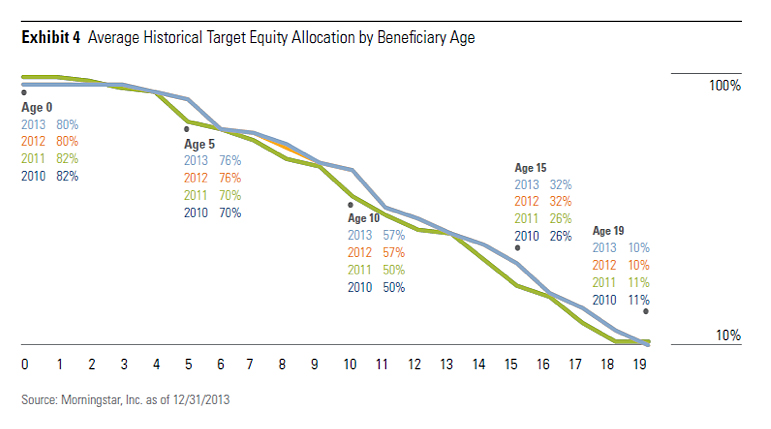 Contributed by: Sandra Adams, CFP®
Contributed by: Sandra Adams, CFP®
April is Financial Literacy Month. When many of us think about financial literacy, our thoughts immediately go to our children and educating them on the basics of money – debt, credit, budgeting, and the like. But the reality is that financial literacy is a lifelong process and applies to all of us at all ages and stages of life – the learning never stops. From a child's earliest spending to a senior citizen's retirement decisions, individuals apply their knowledge and skills to financial choices, and it is important that they are making informed decisions at all stages.
What we know:
People who are financially literate are generally less vulnerable to financial fraud.
Research shows that financial illiteracy is very common, with the Financial Industry Regulatory Authority (FINRA) attributing it to 66% of Americans.
In its Economic Well-Being of U.S. Households in 2020 report, the U.S. Federal Reserve System Board of Governors found that many Americans are unprepared for retirement. More than one-fourth indicated that they have no retirement savings, and fewer than four in 10 of those not yet retired felt that their retirement savings are on track.
Low financial literacy has left millennials—the largest share of the American workforce—unprepared for a severe financial crisis, according to research by the TIAA Institute. Over half lack an emergency fund to cover three months' expenses, and 37% are financially fragile (defined as unable or unlikely to come up with $2,000 within a month in the event of an emergency).
A strong foundation of financial literacy can help support various life goals, such as saving for education or retirement, using debt responsibly, and running a business. Key aspects of financial literacy include knowing how to create a budget, plan for retirement, manage debt, and track personal spending. The earlier one can begin to learn the basics, the better. However, there is always time to learn and apply lessons learned when it comes to handling one's own finances.
Benefits of Financial Literacy:
Holistically, the benefit of financial literacy is to empower individuals to make smarter decisions. More specifically, financial literacy is important for several reasons.
Financial literacy can prevent devastating mistakes: Seemingly innocent financial decisions may have long-term implications that cost individuals money or impact life plans. Financial literacy helps individuals avoid making mistakes with their personal finances.
Financial literacy prepares people for emergencies: Financial literacy topics such as saving or emergency preparedness prepare individuals for the uncertain. Though losing a job or having a significant unexpected expense are always financially impactful, an individual can cushion the blow by implementing their financial literacy in advance by being ready for emergencies.
Financial literacy can help individuals reach their goals: By better understanding how to budget and save money, individuals can create plans that set expectations, hold them accountable to their finances, and set a course for achieving seemingly unachievable goals. Though someone may not be able to afford a particular goal today, they can always make a plan to better increase their odds of making it happen.
Financial literacy invokes confidence: Imagine making a life-changing decision without all the information you need to make the best decision. By being armed with the appropriate knowledge about finances, individuals can approach major life choices with greater confidence realizing that they are less likely to be surprised or negatively impacted by unforeseen outcomes.
If you are like we are at The Center and are interested in helping spread the word about Financial Literacy, organizations like Junior Achievement, The JumpStart Coalition, and The Consumer Financial Protection Bureau are great places to go to start.
Sandra Adams, CFP®, is a Partner and CERTIFIED FINANCIAL PLANNER™ professional at Center for Financial Planning, Inc.® and holds a CeFT™ designation. She specializes in Elder Care Financial Planning and serves as a trusted source for national publications, including The Wall Street Journal, Research Magazine, and Journal of Financial Planning.
The foregoing information has been obtained from sources considered to be reliable, but we do not guarantee that it is accurate or complete, it is not a statement of all available data necessary for making an investment decision, and it does not constitute a recommendation. Any opinions are those of the Sandra D. Adams, CFP® and not necessarily those of Raymond James. While we are familiar with the tax provisions of the issues presented herein, as Financial Advisors of RJFS, we are not qualified to render advice on tax or legal matters. You should discuss tax or legal matters with the appropriate professional. Examples used are for illustrative purposes only.
Securities offered through Raymond James Financial Services, Inc. Member FINRA/SIPC. Investment advisory services offered through Center for Financial Planning, Inc.® Center for Financial Planning, Inc.® is not a registered broker/dealer and is independent of Raymond James Financial Services.
Certified Financial Planner Board of Standards Inc. owns the certification marks CFP®, CERTIFIED FINANCIAL PLANNER™, CFP® (with plaque design) and CFP® (with flame design) in the U.S., which it awards to individuals who successfully complete the CFP Board’s initial and ongoing certification requirements.





















